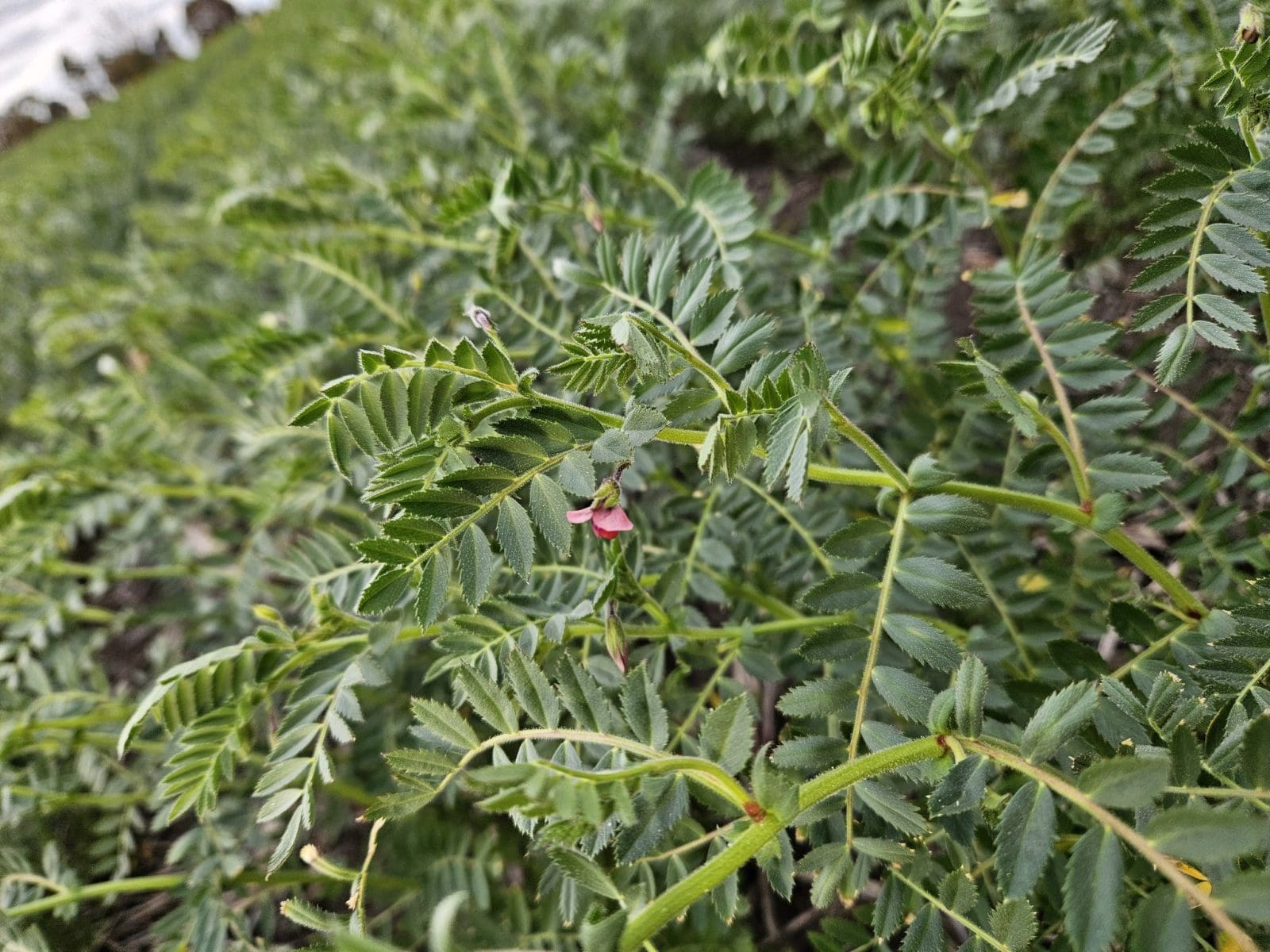
A chickpea crop on Qld’s western Downs showing its first flowers and good yield potential in early August.
QUEENSLAND’S grain supply chain is about to be put the test by one if its biggest chickpea-export tasks shoehorned into a four-month window.
Industry estimates put the volume to be shipped, ideally between October and February, at 560,000 tonnes.
Bookending the timing of the task will be the peak harvest window, generally expected to run from October to December, and two significant offshore events.
These are the start of Ramadan, which dictates a February deadline for cargoes to arrive in Bangladesh ahead of the start of the feasting month, and the March 31 end to the tariff-free window into India.
India may extend the tariff-free period if its own pulse crops are on the small side, but an average or better kharif and rabi season could well see the door slam shut, and Australian cargoes will need to be discharged in India by March 31 to avoid the tariff.
In order to have road, rail and phytosanitary capacity maximised ahead of the big chickpea program, the Queensland Transport and Logistics Council hosted a workshop on August 19 to bring those in the supply chain together.
It included presentations from AgForce, Port of Brisbane, and GrainGrowers, and identified a number of avenues currently being pursued in order to get as many chickpeas as possible on to vessels by February.
Road and rail in focus
AgForce policy director Ruth Thompson was one of the workshop’s presenters, and told Grain Central after the event that AgForce was concentrating on what could be done to get the “very big chickpea crop” on to the water more efficiently.
Ms Thompson said AgForce has already applied to Qld’s Department of Transport and Main Roads for a permit to allow AB-triple trucks to run to port for the peak chickpea-delivery period.
Those would make bring the maximum allowable gross vehicle mass up to 113t, compared to 85t at present.
TMR allowed AB-triples carrying grain to run to port during COVID, when traffic levels were extraordinarily low, and Ms Thompson said she was hopeful they could help with the chickpea task, possibly on restricted hours.
“We’re always willing to work with the department to find more effective and efficient ways of getting loads to port,” Ms Thompson said.
“We have put forward that we would like to see AB-triples allowed and…the ball is in TMR’s court at the moment.”
“AB-triples have to unhook a trailer at Gatton, run to port, and then come back and get the other trailer; if they could run to port without unhooking, that would mean an awful lot less trucks on the road.
Load limits for AB-triples crossing the Bremer River Bridge on the Warrego Highway west of Brisbane are also being examined.
As laden trucks travel east to Brisbane, Ms Thompson said this was not expected to present a problem.
“There are weight constraints on the Bremer Bridge westbound, but not eastbound; and most of our guys will be carting back empty.”

QTLC organised a workshop held at Port of Brisbane on August 19 to bring together those in the chickpea supply chain ahead of the new-crop shipping program. Photo: QTLC
Even though GrainCorp Fisherman Islands is the only one of Brisbane’s four bulk grain export facilities with rail connectivity, rail could also play an important part in getting new-crop chickpeas to port.
Two seasonal impediments could limit rail use, these being track maintenance and upgrades which occur annually post-Christmas and into January, and heat.
To minimise the risk of rail damage and derailments, speed restrictions can come into play once temperatures get above 32 degrees Celsius, and all train movements can be stopped once the mercury gets to 36-38 degrees, depending on the section.
Work on the Cross River Rail project in Brisbane’s inner south is also expected to occur over the holiday period.
Ms Thompson said all three factors could limit the paths available to trains carrying chickpeas, as can the variability of the grain-on-rail freight task behind the Qld rail network’s big mover, coal.
“Ag comes second to minerals, and you’ve got to book slots a long time in advance.”
Ms Thompson said discussions at the QTLC focused on “what sort of solutions we could all come up with”.
QTLC is a cooperative industry and government body that provides advice to stakeholders and governments on the development, planning, regulation and operation of multi-modal freight and logistics transport, infrastructure and services in Queensland.
Those involved in the August 19 workshop, believed to be the first ever held in relation to a specific agricultural commodity, said it provided a valuable forum for stakeholders to talk about the timing and size of the upcoming freight task.
Containers expensive, hard to get
Chickpeas are expected to be the no. 1 cash crop for Qld growers this harvest, with offers on early new-crop of around $1100/t, roughly four times the equivalent for wheat and barley, although chickpea yields are often less than half per hectare of winter cereals.
RainAg is one of the companies which will be accumulating chickpeas for vessels loading in Brisbane, and RainAg director Ian Grellman said growers will be pushing hard to get their chickpeas harvested and on to early vessels, whatever the weather.
Australia’s major desi chickpea-growing areas have summer-dominant rainfall, and Mr Grellman said he believes growers will prioritise the harvest of their chickpeas over cereals if rain is coming to avoid a downgrade.
“They have potential to lose $200-$300/t by not hitting those top-grade specs,” Mr Grellman said.
With 20-foot food-grade containers in chronically short supply, and container freight rates per tonne being around double that of bulk, Mr Grellman said all the pressure is on bulk to export Qld’s biggest chickpea crop since 2016-17.
“In that year, we exported 600,000t between October and January, but that was including containers,” Mr Grellman said.
“We know we can do it, but can we do it just in bulk?”
“Freight is going to be the big issue.
“We’ve got to move a lot of tonnes to the port very quickly.”
Mr Grellman said while the supply chain can cope with patchy storm rain, general rain would make a tight timeframe even tighter.
“If you lose a week because of rain, everything gets pushed another week out because of that knock-on effect.”
Grain Central: Get our free news straight to your inbox – Click here

HAVE YOUR SAY